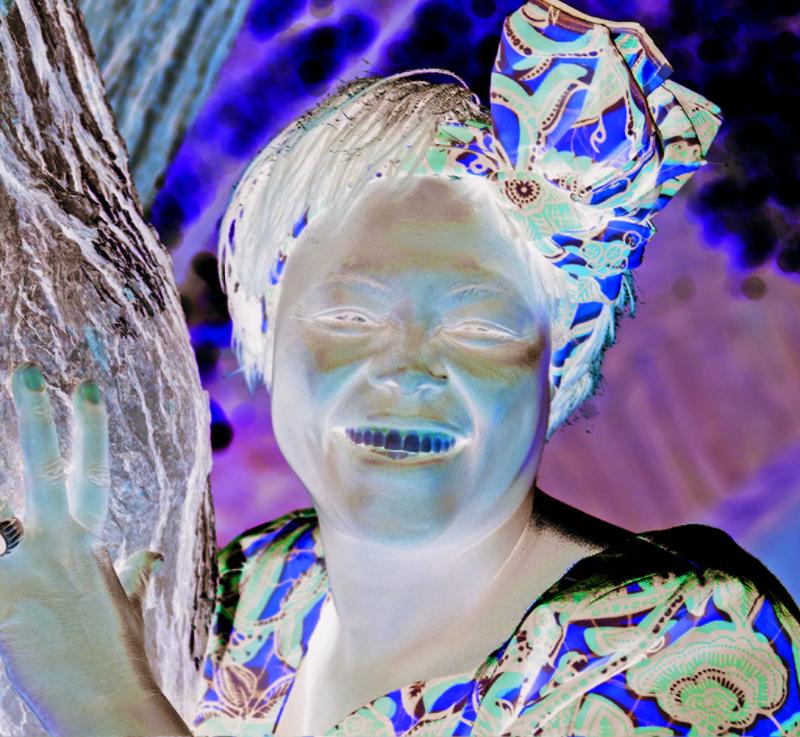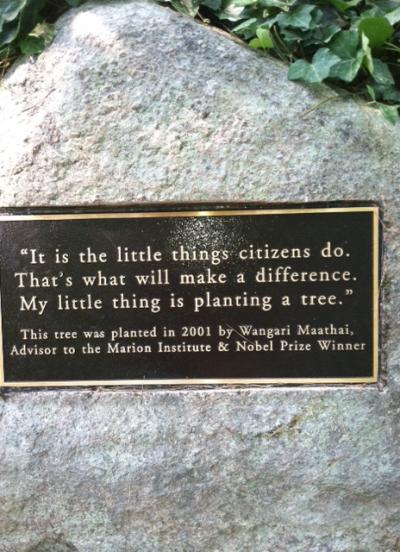With Video: Plaque in Marion commemorates Nobel Peace Prize winner
With tens of millions of trees planted through her work, Nobel Peace Prize winner Wangari Maathai united communities and challenged the Kenyan government.
Now, a plaque in Marion’s Bicentennial park remembers this gutsy humanitarian who fought for change from the ground up.
Through her organization, the Green Belt Movement, Maathai rallied communities across Kenya to plant trees that could be used as fuel, food and to improve ecosystems.
According to its website, the Green Belt Movement has seen 47 million trees planted since 1977.
Although much of her work was done in Kenya, Maathai’s impact extends across the globe, even after she succumbed to cancer in September 2011.
The Marion Institute began working with Maathai and her organization in the late 1990’s to help them build awareness, fundraise and establish nonprofit status in the States.
In 2001, the Institute arranged a tree planting with Maathai at Bicentennial Park.
“She glowed. She lit up a room just walking into it,” said Marion Institute’s Executive Director Desa Van Laarhoven. “We wanted to make sure people hear her name.”
Van Laarhoven said the planting was somewhat comical.
“She shows up and we have this giant tree, six feet tall. It’s clearly not a sapling,” said Van Laarhoven. “She was laughing. She thought it was so beautiful how the United States, when they focused on doing something, did it to the biggest degree they could fathom.”
While Maathai loved planting trees, Van Laarhoven said, “The whole reason she was really doing this was to build communities, to bring women together, to empower youth. That was all her cover mission: to build a more sustainable, loving world.”
Maathai got women talking about HIV and AIDS, advocated for equal rights and spoke out against the destruction of the natural environment, said Van Laarhoven.
For her work, Maathai often put her life in danger.
“She was an incredible woman who was beaten by police and arrested many times,” said Laarhoven. “We can’t even put our finger on the pulse of what she influenced. She lives on in many ways.”
One of those ways is through a new plaque that stands beside the tree Maathai planted in 2001. Van Laarhoven said Maathai’s death prompted the Institute’s Board of Directors to install it in her memory.
“They wanted to make sure to protect the tree, to make sure people knew. Maybe people will come across it and look her up,” said Van Laarhoven.
Almost a year after Maathai’s death, her work continues through the Green Belt Movement. Marion Institute also continues to look for ways to contribute to her mission of uniting communities in America and abroad.
The question, said Van Laarhoven is: “How can we create inspiration from this woman who poured her heart and soul into this work?”















